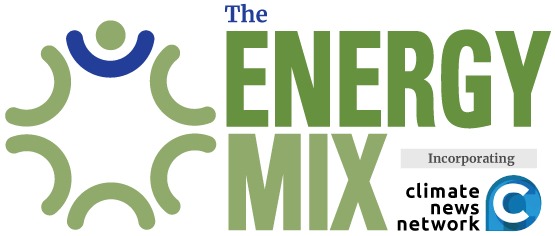U.S. Threatens to Quit IEA if Analysis Keeps Projecting Renewable Energy Future
The Trump administration is threatening to pull the United States out of the International Energy Agency if the IEA doesn’t bring its independent forecasts in line with the administration’s support for a more fossil-friendly future.
“We will do one of two things: we will reform the way the IEA operates or we will withdraw,” U.S. Energy Secretary Chris Wright told Bloomberg last week. “My strong preference is to reform it.”
The threat “reflects growing tensions between the Trump administration’s energy priorities and the IEA’s focus on clean energy transitions,” Forbes reports. “Wright’s criticism centres on the IEA’s reports and projections, which he and other critics of the agency argue are overly optimistic about renewable energy adoption and fail to adequately prioritize energy security.”
The controversy “underscores a broader ideological divide between the U.S. administration and many other western governments over global energy policy and could impact international cooperation and domestic energy strategies,” Forbes adds.
The Paris-based IEA first introduced a full net-zero scenario in May 2021. Its landmark report called for no new investment in oil, gas, or coal development, a massive increase in renewable energy adoption, speedy global phaseouts for new natural gas boilers and internal combustion vehicles, and a sharp focus on short-term action to reduce the greenhouse gas emissions that are supercharging the global climate emergency.
Beyond projects already committed as of 2021, there are no new oil and gas fields approved for development in our pathway, and no new coal mines or mine extensions are required,” the IEA wrote. “The unwavering policy focus on climate change in the net-zero pathway results in a sharp decline in fossil fuel demand, meaning that the focus for oil and gas producers switches entirely to output—and emissions reductions—from the operation of existing assets.”
“It’s not a model result,” analyst Dave Jones of the clean energy think tank Ember told Bloomberg Green at the time. “It’s a call to action.”
“Big Oil and Gas has just lost a very powerful shield!” wrote Oil Change International Senior Campaigner David Tong.
Since then, the IEA’s annual World Energy Outlook (WEO), which it previously styled the “gold standard of energy analysis”, has proclaimed the “Age of Electricity”, consistently projecting that demand for all three fossil fuels will peak before 2030 before going into permanent decline.
“That’s just total nonsense,” responded Wright, who was CEO of a US$2.8-billion oilfield services company before joining Donald Trump’s cabinet and taking over responsibility for his new boss’ analytically challenged “Drill, Baby, Drill” agenda. In an interview during a conference at Pittsburgh’s Carnegie Mellon University, Wright told Bloomberg he’d said as much to IEA Executive Director Fatih Birol.
“Wright’s criticism of the agency that gets millions of dollars in US funding is in line with Trump’s broader pro-fossil fuels thrust,” Bloomberg writes.
But far from shutting down the IEA’s independent analysis, a U.S. withdrawal might only dampen the Trump administration’s ability to influence and try to reshape (or misshape) its work. Days after the IEA released its net-zero pathway, The Energy Mix described a governance structure that gave the U.S. 46 of the 184 votes on the IEA’s governing board, based largely on its oil consumption compared to the agency’s other members.
“For years, environmental groups and climate activists have been demanding the IEA produce a full-scale pathway for getting to net-zero by 2050,” veteran climate reporters Akshat Rathi and Eric Roston wrote at the time for Bloomberg Green. But “as an agency that only answers to ministers of rich countries, it’s had to wait until the majority of its members committed to that goal, with the U.S.—the IEA’s biggest funder—joining the list last month.”
“Last month” would have been April 2021, a scant few weeks after U.S. President Joe Biden was inaugurated. Until then, the Trump administration was in a position to exert outsized influence on the IEA’s governing board to obstruct progress—just as it’s trying to do now.
If Trump quits the IEA, U.S. funding for the agency will disappear, but so will its standing on the governing board.
Last time around, The Mix revealed that Canada had played an important behind-the-scenes role in prodding the IEA to develop its net-zero scenario.
“I can say that Canada was reasonably active in pushing the IEA to develop a 1.5°C scenario from quite early on, including ministerial letters to the IEA as well as to peer member states,” said one close observer of the process, who declined to be identified. “So on this front, they have been helpful.”
“There have been governments behind the scenes over the years, requesting that the IEA move in this direction,” agreed Kelly Trout, interim director of Oil Change International’s energy transitions and futures program. Along with Canada, Trout cited Germany, Spain, Denmark, and France, as well as the United Kingdom, which commissioned the 2021 net-zero report in its role as president of that year’s United Nations climate change conference, COP26.
Cover photo: By The Energy Mix


